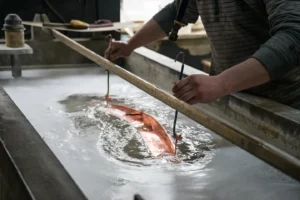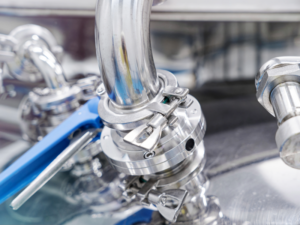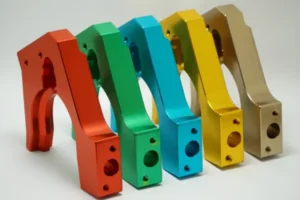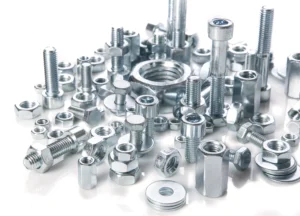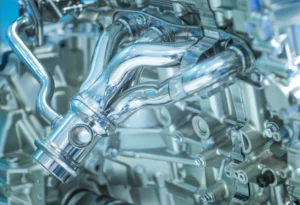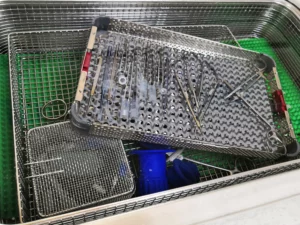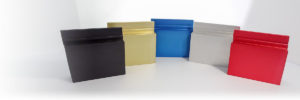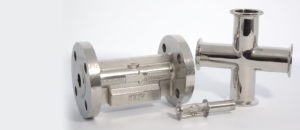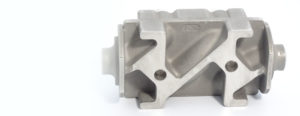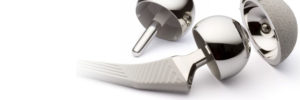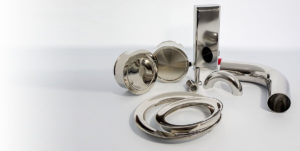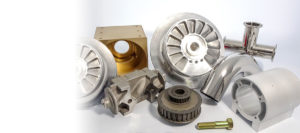Plating metal is not just for aesthetics, it also provides resistance to corrosion, wear, and tear.
The world of parts manufacturing relies on precision, quality, and durability. Many people don’t realize that a seemingly simple process like plating metal plays a crucial role in achieving these goals. Beyond aesthetics, metal plating unlocks a hidden layer of functionality, enhancing the performance and lifespan of your components. This guide delves into the secrets of metal plating to help you to make informed decisions for your manufacturing endeavors.
Plating Metal – The Fundamentals
Metal plating involves depositing a thin layer of one metal onto another, transforming its properties and unlocking a plethora of benefits. But how does this magic happen? Several techniques exist, each with its own advantages and applications:
- Electroplating: The workhorse of the industry, electroplating, utilizes an electric current to precisely deposit metal ions onto the desired surface. Imagine tiny, charged particles seamlessly migrating, forming a uniform and controlled coating. Electroplating advantages include precise thickness control and uniform coating though it is a more complex process with a higher cost compared to other methods.
- Electroless Plating: This method employs a chemical reaction to coat even non-conductive materials, offering flexibility and versatility. Think of metal atoms spontaneously arranging themselves on your part, like snowflakes forming intricate patterns. Electroless plating offers a uniform thickness, and it can be used to coat non-conductive surfaces. Control over the thickness and uniformity can be challenging, especially for complex geometries, and compared to electroplating, electroless plating is a slower process.
- Hot Dipping: For larger parts and thicker coatings, hot dipping involves immersing the metal in a molten bath of the desired coating material. Think of your component taking a hot bath, emerging with a new, protective layer. If your part is delicate or requires a thin, precise coating, this may not be the right process for you.
- Vacuum Plating: This high-tech approach uses a vacuum chamber to vaporize the coating metal, creating an ultra-pure and precise finish. Imagine metal atoms traveling through space, landing gently on your part’s surface. The specialized equipment used for vacuum plating commands a higher cost and processing large batches can take more time due to chamber size limitations.
Beyond the Basics of Plating Metal: What They Don’t Tell You
While most manufacturers are familiar with these techniques, the true magic lies in surface preparation.
Surface contaminants like oils, oxides, and dirt can significantly affect the quality of the plating. Just like a clean canvas is essential for a masterpiece, a meticulously prepared surface ensures optimal adhesion and flawless plating results.
Advanced surface preparation, which can include a combination of chemical and mechanical processes, are vital for ensuring overall finish quality. Techniques like degreasing, pickling, and etching remove contaminants to create a perfect foundation for the new metal layer to bond with.
Tailoring to Parts Manufacturers
As a parts manufacturer, knowing what to request when outsourcing surface finishing is crucial. It’s not just about choosing a type of plating but understanding the specific requirements of your parts. Factors like the operating environment, expected lifespan, and aesthetic demands play a crucial role in deciding the appropriate plating method and thickness.
- Operating Environment: Will your parts face harsh chemicals, extreme temperatures, or constant friction? Understanding the environment dictates the type and thickness of the plating for optimal performance.
- Expected Lifespan: Do you need a part to last for decades or just a few cycles? The thickness and type of plating will influence the durability and longevity of your components.
- Aesthetic Demands: Is a gleaming chrome finish essential for your product’s appeal? Or is a subtle, functional coating sufficient? Understanding your aesthetic needs ensures the plating complements your product’s design.
For instance, parts exposed to harsh environments might benefit from thicker, corrosion-resistant coatings like zinc-nickel, whereas components requiring electrical conductivity might be better off with a thinner silver or gold plating.
Unlocking Excellence with AMF Technologies:
Navigating the world of metal plating can be complex. But with AMF Technologies, you have a trusted partner by your side. Our team of experts possesses the knowledge and experience to guide you through every step, from selecting the optimal plating technique to achieving a flawless finish. We understand that the right plating can be the difference between a good part and a great one, one that exceeds expectations and sets your product apart.
How Can AMF Technologies Assist?
Metal plating is not just a process but an art that demands understanding beyond the usual surface knowledge. It’s about matching the right technique with the right application and preparing the surface to perfection. With AMF Technologies, you can elevate their parts to meet the highest standards of quality and durability. Contact us with any questions or to request a quote.

